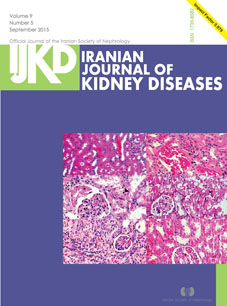Association of Brain-dead Donor’s Urine Neutrophil Gelatinase-associated Lipocalin Levels With Kidney Allograft Function
Abstract
Introduction. Development of delayed graft function is more prevalent in patients receiving a kidney allograft from brain-dead than living donors. This study aimed to evaluate the association between urine neutrophil gelatinase-associated lipocalin (NGAL) levels in brain-dead donors and subsequent allograft function.
Materials and Methods. Urine NGAL concentration was measured in urine samples obtained from 24 brain-dead kidney allograft donors before organ retrieval. The 24 kidney recipients were followed for 6 months. The immunosuppressive therapy was similar for all of the recipients. Following transplantation, plasma creatinine was recorded daily during the recipient's stay in the hospital and then at 1, 3, and 6 months after transplantation. Delayed graft function was defined as the need for dialysis in the first 7 days after transplantation.
Results. The mean age of the donors was 28.7 ± 11.2 years and 70.8% were men. Their median urine NGAL level was 7.4 ng/ml (range, 2 ng/mL to 45 ng/mL). Urine NGAL levels were only associated with the need for cardiopulmonary resuscitation (P = .007). On the 1st day after transplantation, 16.7% of the recipients developed delayed graft function, which was declined to 12.5% on the 2nd day and to 8.3% during the 3rd day and the following days. No significant association was observed between the donor's urine NGAL levels and graft function (P = .86).
Conclusions. Our results did not show any association between urine NGAL levels and outcome of allograft function obtained from brain-dead donors. Larger studies are required to confirm this finding.


